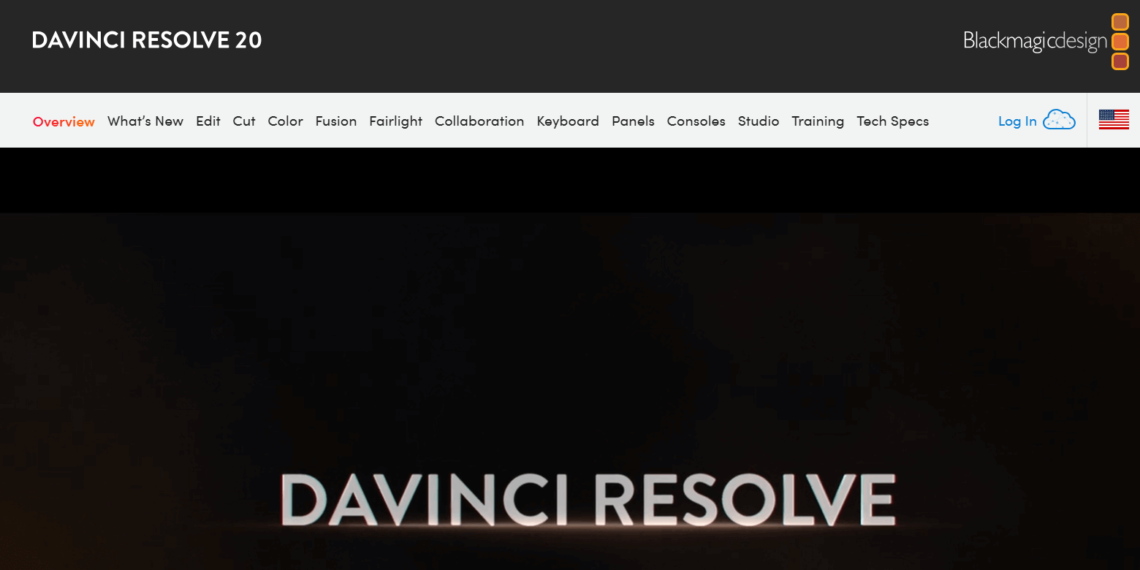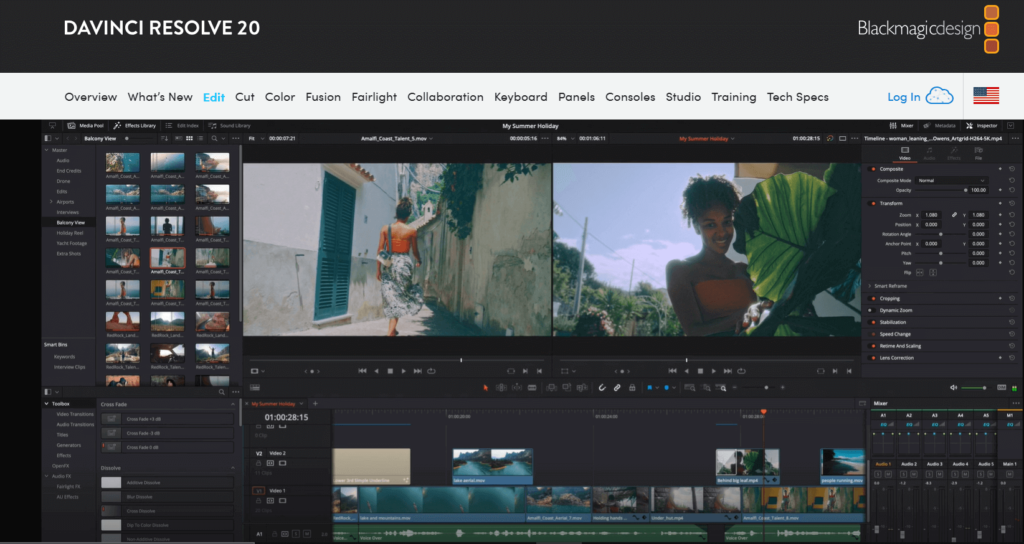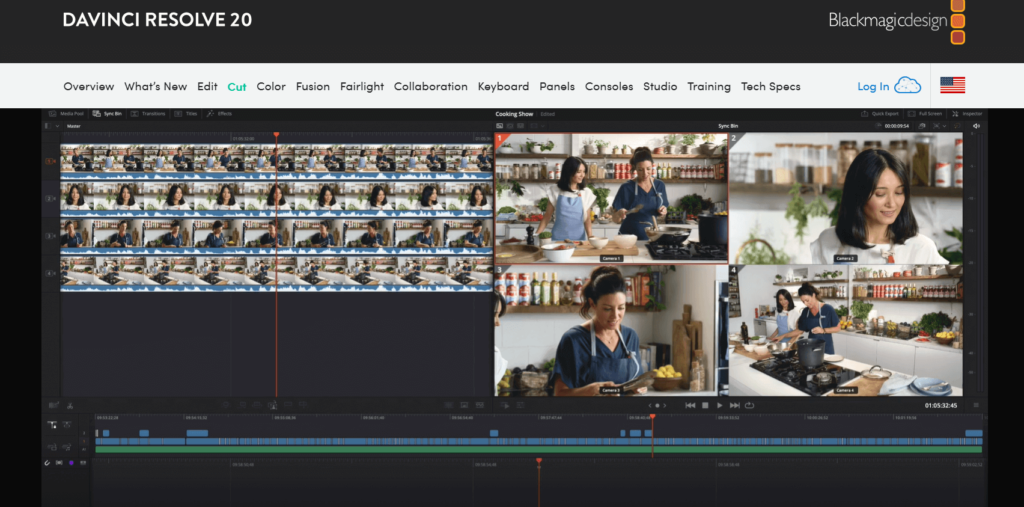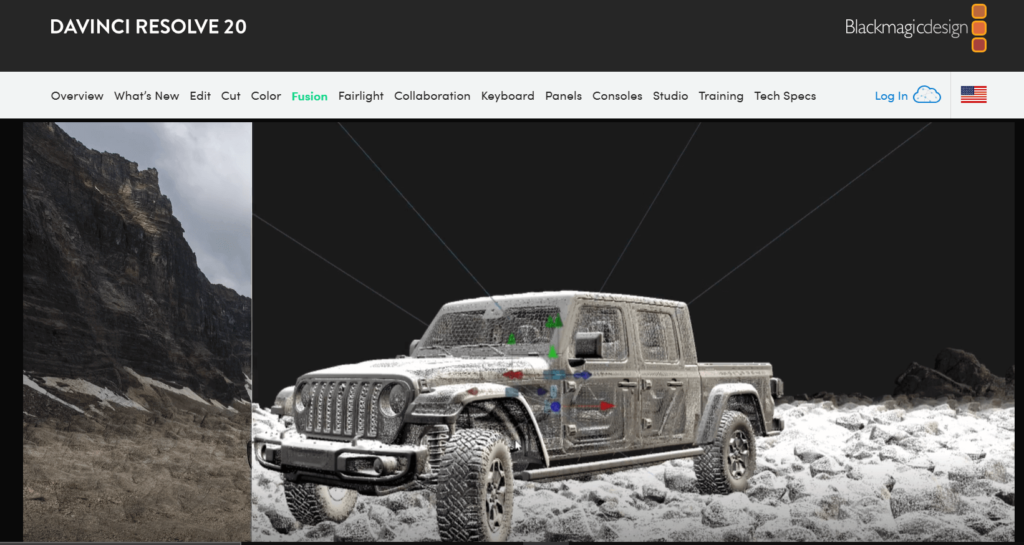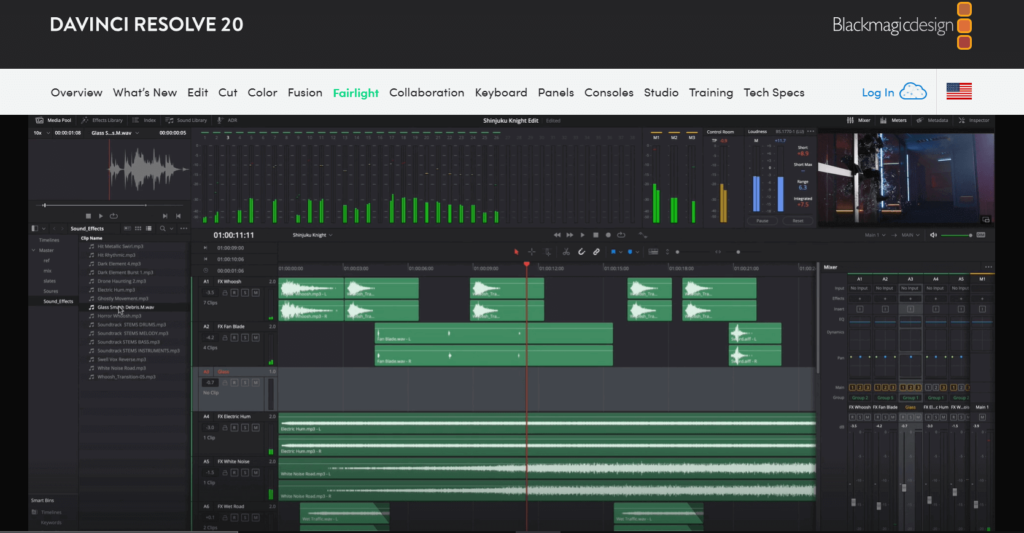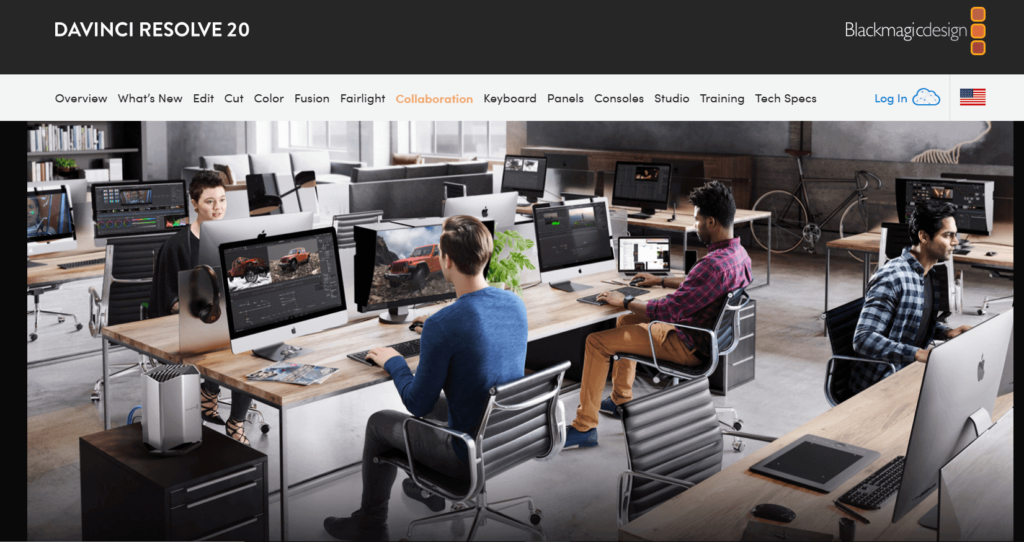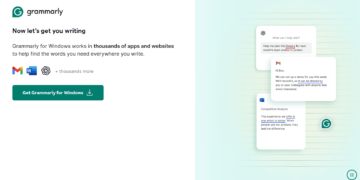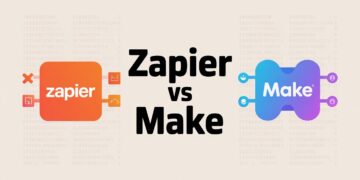In the world of video editing, it’s rare to come across professional-grade software that doesn’t come with a hefty price tag. That’s where DaVinci Resolve stands out. Developed by Blackmagic Design, DaVinci Resolve has built a strong reputation as one of the most powerful tools for video editors offering a robust suite of features completely free. But is it truly the best free video editing software available? In this detailed review, we’ll explore what DaVinci Resolve offers, its strengths and limitations, and how it stacks up against competitors.
What DaVinci Resolve Does
DaVinci Resolve is a professional non-linear video editing application designed for filmmakers, YouTubers, video editors, and colorists. It combines editing, color correction, visual effects, motion graphics, and audio post-production all within a single software package.
Originally known for its advanced color grading tools, DaVinci Resolve has since evolved into a full-fledged editing powerhouse that competes directly with Adobe Premiere Pro and Final Cut Pro. Its clean interface, node-based effects system, and collaborative capabilities make it suitable for both solo creators and large-scale post-production teams.
Key Features
What sets DaVinci Resolve apart from other free video editing software is the depth and variety of tools available. Here are the core features that make it a standout choice:
1. Edit Page
The Edit Page offers a traditional timeline-based editing workflow. You can drag and drop clips, trim footage, add transitions, and layer effects with ease. The customizable workspace allows editors to organize their media and timelines efficiently.
2. Cut Page
Designed for quick edits and fast turnarounds, the Cut Page is perfect for social media content or short-form projects. Its streamlined interface reduces clutter and allows for a faster editing process.
3. Fusion – Visual Effects & Motion Graphics
Fusion is DaVinci Resolve’s built-in VFX suite, offering node-based compositing, 3D workspace, and advanced motion graphics capabilities. From green screen keying to particle effects, Fusion rivals standalone applications like Adobe After Effects.
4. Fairlight – Professional Audio Post
The Fairlight page provides a complete digital audio workstation (DAW) within DaVinci Resolve. With advanced EQ, mixing, ADR, and automation features, it’s ideal for users who want high-quality sound design without switching software.
5. Color Grading Tools
DaVinci Resolve is widely regarded as the industry leader in color correction and grading. The software’s color page offers precision control over color wheels, curves, LUTs, and HDR grading. Professional colorists often choose Resolve over other tools for this reason alone.
6. Collaboration and Multi-User Workflow
Resolve allows multiple users to work on the same project simultaneously. Editors, colorists, VFX artists, and sound designers can all collaborate in real-time, which is particularly useful for studio environments.
7. High-Performance Playback Engine
DaVinci Resolve is optimized for speed and responsiveness. The software supports hardware acceleration and works with GPUs to deliver smooth playback, even with high-resolution footage.
Pricing Plans
One of the biggest draws of DaVinci Resolve is its pricing structure.
DaVinci Resolve (Free Version)
-
Full editing suite including the Cut, Edit, Fusion, Fairlight, and Color pages
-
Up to 4K resolution export
-
Access to hundreds of effects, transitions, and tools
-
Perfect for beginners, intermediate editors, and even pros
DaVinci Resolve Studio (Paid Version)
-
One-time purchase: approximately $295 USD
-
Includes additional effects, noise reduction, stereoscopic 3D, advanced HDR grading, and more
-
Offers support for multiple GPUs and higher-resolution exports (up to 8K)
-
Ideal for professional studios and high-end commercial work
Unlike competitors that charge monthly fees, DaVinci Resolve Studio is a one-time investment making it cost-effective for long-term users.
Pros & Cons
Pros:
-
Professional-level features at no cost
-
Industry-leading color grading tools
-
Built-in VFX and audio post-production
-
No watermark or trial limitations in the free version
-
Regular updates and strong community support
-
Runs on Windows, macOS, and Linux
Cons:
-
Steeper learning curve, especially for beginners
-
Requires a powerful computer to run smoothly
-
Some features (like advanced noise reduction) locked in paid version
-
Can be overwhelming due to depth of tools
Target Audience
DaVinci Resolve is incredibly versatile, but it shines brightest for certain types of users:
-
Aspiring filmmakers seeking a professional-grade editing tool without spending money
-
YouTubers and content creators looking for advanced features like motion graphics and audio control
-
Freelancers and hobbyists wanting to level up their editing skills
-
Colorists and post-production professionals requiring precise color control
-
Educators and students in media programs who need a free yet capable platform
Beginners may face a learning curve, but the long-term benefits and quality of the results make it worth the effort.
DaVinci Resolve vs Adobe Premiere Pro
DaVinci Resolve offers a broader set of tools within one application, whereas Adobe requires switching between multiple apps for a full workflow. For those on a budget, Resolve clearly has the edge. While both DaVinci Resolve and Adobe Premiere Pro are powerful, they cater to slightly different workflows. Here’s a quick breakdown:
Feature |
DaVinci Resolve |
Adobe Premiere Pro |
|---|---|---|
Price |
Free / $295 one-time |
$20.99/month (individual) |
Color Grading |
Advanced, industry standard |
Basic to intermediate |
VFX & Motion Graphics |
Built-in (Fusion) |
External (After Effects) |
Audio Editing |
Fairlight integrated |
Basic tools, Audition separate |
Ease of Use |
Steep learning curve |
More intuitive UI |
Collaboration Tools |
Strong |
Available, but more limited |
DaVinci Resolve vs CapCut
CapCut is a popular, mobile-friendly video editor known for its simplicity and quick editing capabilities. It’s often used by social media creators, especially on TikTok and Instagram. Here’s how it compares to DaVinci Resolve:
Feature |
DaVinci Resolve |
CapCut |
|---|---|---|
Platform |
Windows, macOS, Linux |
Web, iOS, Android, Windows |
Target User |
Professionals, YouTubers |
Social media creators |
Ease of Use |
Moderate to advanced |
Beginner-friendly |
Video Editing Tools |
Professional timeline editing |
Drag-and-drop basic editing |
Color Grading |
Advanced |
Basic filters |
Audio Editing |
Full audio suite (Fairlight) |
Simple trimming and tracks |
Export Resolution |
Up to 8K (Studio) |
Up to 4K |
Pricing |
Free / $295 one-time (Studio) |
Free (limited features), paid premium available |
DaVinci Resolve vs Filmora
Filmora by Wondershare is a user-friendly video editor aimed at beginners and casual content creators. It offers drag-and-drop functionality, effects, and templates for easy video production.
Feature |
DaVinci Resolve |
Filmora |
|---|---|---|
Platform |
Windows, macOS, Linux |
Windows, macOS |
User Level |
Intermediate to expert |
Beginner to intermediate |
Interface |
Professional-grade |
Simplified and intuitive |
Color Grading |
Industry-standard tools |
Basic color tools |
Audio Editing |
Full audio post suite |
Standard tools |
Built-in Effects |
Fusion for VFX & motion |
Prebuilt templates/effects |
Watermark (Free) |
None (free version is fully functional) |
Watermark unless paid |
Pricing |
Free / $295 one-time (Studio) |
Subscription or one-time fee (with limitations) |
DaVinci Resolve vs Final Cut Pro
Final Cut Pro is Apple’s flagship video editing software, designed for speed and seamless performance on macOS. It’s widely used by content creators and indie filmmakers.
Feature |
DaVinci Resolve |
Final Cut Pro |
|---|---|---|
Platform |
Windows, macOS, Linux |
macOS only |
Performance |
Requires strong system specs |
Optimized for Apple silicon |
Interface |
Traditional timeline |
Magnetic timeline |
Color Grading |
More advanced |
Intermediate |
Audio Tools |
Fairlight built-in |
Good, but not pro-level |
Motion Graphics |
Built-in via Fusion |
Requires Motion (separate) |
Pricing |
Free / $295 one-time (Studio) |
$299.99 one-time |
DaVinci Resolve vs iMovie
iMovie is Apple’s entry-level video editor that comes free with macOS and iOS devices. It’s perfect for beginners and casual video makers.
Feature |
DaVinci Resolve |
iMovie |
|---|---|---|
Platform |
Windows, macOS, Linux |
macOS, iOS only |
Target Audience |
Intermediate to professional |
Beginners, home users |
Interface |
Complex but powerful |
Extremely simple |
Color Grading |
Advanced |
Basic color correction |
Audio Editing |
Full DAW (Fairlight) |
Basic timeline audio tools |
Motion Graphics/VFX |
Fusion built-in |
Limited transitions |
Pricing |
Free / $295 one-time (Studio) |
Free |
Final Verdict: Is It Worth It?
DaVinci Resolve is arguably the best free video editor available today. It bridges the gap between beginner and professional-level editing with unmatched value. Whether you’re just starting out or producing high-end client work, Resolve has the tools to match your ambition.
While it may require a bit more time to learn, the results speak for themselves. With professional features like Fusion for effects, Fairlight for audio, and the best color grading tools in the business, DaVinci Resolve proves that high-quality video editing doesn’t have to cost a dime.

